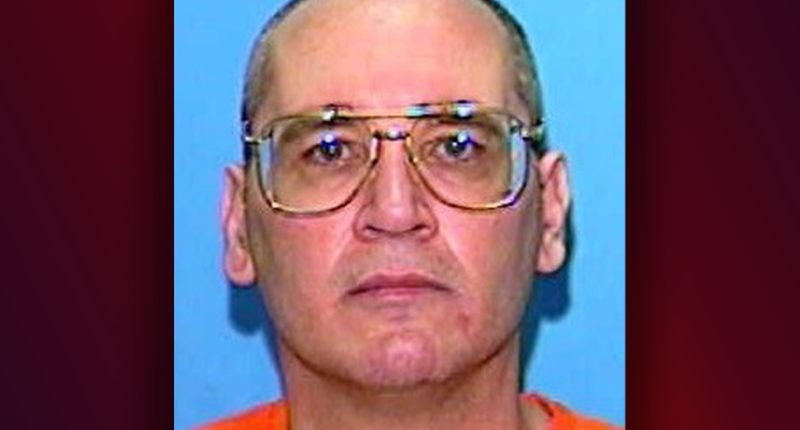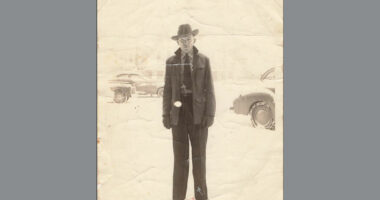Share this @internewscast.com
Officials in Florida are convinced that Daniel Owen Conahan Jr., known as the “Hog Trail Killer,” was responsible for the deaths of over a dozen men, though the actual number of his victims may be even greater.
In Unknown Serial Killers of America, which airs Sundays at 7/6c on Oxygen, investigators from various agencies discussed Conahan’s gruesome crimes. He was known for leaving the dismembered bodies of unidentified men along Florida’s Gulf Coast. Even years following his conviction, police continued to discover his dumping sites in wooded regions throughout Lee, Charlotte, and Sarasota Counties.
“He is one of the most prolific serial murderers in the history of the United States,” stated retired Special Agent Jim Myers from the Florida Department of Law Enforcement (F.D.L.E.).
The Fort Myers 8
On March 23, 2007, a surveyor working in a rural, wooded area of Fort Myers in Lee County stumbled upon human skeletal remains. Responders from the Fort Myers Police Department (F.M.P.D.) responded to the scene, and it wasn’t long before they found the skeletal remains of eight others.
According to F.M.P.D. Cold Case Investigator Richard Harasym, the victims were white males aged 21 to 40, each one unclothed and without any identifying articles. Due to a lack of trauma to the bones — i.e. stab wounds and bullet holes — the medical examiner deduced the victims were possibly strangled to death.
They appeared to have been left in the forest approximately 10 to 12 years before being found.
“The way they determined that was they looked at the vegetation growth around where the bones were found, which would put that they were murdered sometime in the mid-1990s,” Harasym told Unknown Serial Killers of America.
Agent Myers said the dumping site reminded them of the “Hog Trail Murders” of the mid-’90s.
The Hog Trail Murders
Former Lieutenant Mike Gandy of the Charlotte County Sheriff’s Office worked Major Crimes in February 1994 when a pair of hog hunters came upon a decomposing body in a wooded area in northern Port Charlotte, about 40 miles north of Fort Myers. Detective John Joseph Schmidt responded to the scene, where nearby trails had been forged by the wild hogs that inhabited the area.
The victim, known for years as “John Doe No. 1,” was positively identified in 2021 as Massachusetts drifter Gerald “Jerry” Lombard, as previously reported by Oxygen. However, at the time, less-sophisticated DNA testing and a lack of evidence prevented investigators from learning the man’s identity.
“The case did stretch on for almost two years,” Schmidt admitted.
In January 1996, partial remains belonging to a second unidentified body were discovered in the woods of North Port — less than 10 miles from Port Charlotte.
“John Doe number two still had enough tissue to tell that his genitals had been basically surgically removed with a sharp instrument,” Gandy said.
Again, authorities struggled to identify the victim.
The disappearance of Ken Smith
Brandy Smith was only 3 when her father, Ken Smith, disappeared in 1996. As she came to know the story, her father left for a construction job and simply never returned, prompting her aunt and grandmother to call local police and file a missing persons’ report.
“It was hard,” Brandy Smith told Unknown Serial Killers of America. “Just mixed emotions.”
Later, in March 1996, John Doe No. 3 was discovered near I-75. Like the others, later stages of decomposition made it difficult to make a positive identification.
On April 17, 1996, county workers came upon the scattered skeletal remains of John Doe No. 4.
“We realized these body parts had been sawed in half,” said Gandy. “There was still a little bit of tissue left, so it had some weeks but not a real long time.”
Authorities widened the area and found John Doe No. 5 after spotting a human hand sticking out from rolled-up carpet padding. Because his body wasn’t in later-stage decomposition, detectives found his genitals had been removed, and he sustained ligature marks across his throat, chest, and legs.
Ligature marks were also found on tree branches, indicating the killer suspended his victims in “one of the most horrific scenes” Gandy said he’d ever seen.
A tattoo on John Doe No. 4’s shoulder was disseminated in the news, and, according to Brandy Smith, her aunt recognized it as Ken Smith’s.
DNA testing proved it so.
Ken Smith was loved by his relatives and fondly remembered for his passion for fishing and hunting. But, according to investigators, he struggled with substance abuse, which gave some insight into the kind of victim the “Hog Trails Killer” possibly sought.
The identification of John Doe No. 5
Fingerprints proved John Doe No. 5 was Richard Montgomery, a 20-year-old man who struggled with substance abuse and was described by family members as a “rambunctious” and “wild” guy who spent time on the streets, according to Agent Myers.
During Mongomery’s post-mortem examination, experts found a blue paint chip and fibers matching fibers found with Ken Smith’s body.
Montgomery’s mother told investigators that he planned to meet someone named “Dan” on the night Montgomery disappeared and never returned.
Officials enlisted the help of F.D.L.E. profiler Wayne Porter, hoping to glean more information about the unknown serial killer. Porter said it was apparent they had a “sexual sadist” on their hands, “a demon” underneath a mask of a nice guy.
“Also, he had the plan; he had the organization; he had a vehicle to transport,” Porter told Unknown Serial Killers of America. “So, we felt like we were dealing with a highly intelligent killer.”
Sexual sadists, according to psychological criminologist Dr. Bryanna Fox, often felt “inadequate,” which sometimes “culminates in them trying to regain some type of control and dominance.” In the case of the John Does of the hog trails, it culminated in murder.
A suspect comes onto the radar
Law enforcement warned the public of the unnamed killer, and the tips soon poured in. But one felt promising above the rest, and it came from an inmate, David Payton. Payton claimed a man who went by “Dan” picked him up in a blue Mercury Capri and drove him into the woods before the vehicle got stuck in the mud.
When “Dan” exited and attempted to push the car free, Payton looked in the backseat and found a bag containing knives, rope, a tarp, and gloves.
“Payton realized this does not look good, and while Daniel was pushing that car out, David Payton took off with that car,” said Harasym.
In what Harasym called a “ballsy” move, Dan — soon identified as Daniel Owen Conahan Jr. of Punta Gorda, Florida — reported the car stolen.
Fort Myers Police found Payton with the car and arrested him, and Payton was ultimately convicted on charges of grand theft auto despite telling officials that he stole the car to save himself. While serving his time, he positively identified Conahan from a photo lineup, giving investigators their first viable suspect.
A look into Daniel Conahan
Daniel Conahan was a gay man raised in the Catholic faith with parents who did not accept his sexuality, according to Dr. Fox. He joined the U.S. Navy at age 23 but was honorably discharged with conditions after reportedly trying to force oral sex on another and hitting the male victim in the head with a rock when his advances were rejected.
He later worked as an L.P.N. (licensed practical nurse) at a hospital in Charlotte County. But, according to former Lt. Gandy, he was on leave due to a back injury when he first became a suspect.
“We didn’t have enough to arrest him for the five hog trail killings, so we had to watch him,” said Gandy.
A task force of about 20 to 30 in law enforcement helped track Conahan’s movements. It appeared he drove and hunted areas frequented by panhandlers and transients, possibly looking for his next victim. He presented himself as a photographer to undercover detective Ray Wier of the Charlotte County Sheriff’s Office, offering $200 for “bondage shots.”
Despite a set-up meeting in the woods, investigators struggled to find something damning enough to arrest him in connection with the murders.
Lt. Gandy and company stopped Conahan in his vehicle and identified themselves as detectives, inviting Conahan to a motel room where they point-blank asked about the murders.
In video published by Unknown Serial Killers of America, Conahan denied any involvement.
“I’ve had fantasies about the bondage and stuff, but I’ve not engaged in that,” Conahan divulged.
Meanwhile, a search of Conahan’s home yielded several interesting finds, including rope, cameras, and semen-stained underwear that factored into his arrest, according to Gandy. Evidence was soon sent to the labs.
The 1994 attack of Stanley Burden
News of the Hog Trails Murders reached Fort Myers Police, and in May 1996, Det. Tim Gerstner remembered a case from August 1994. That was when a victim, Stanley Burden, was hospitalized after surviving a vicious rape and attempted murder by an unknown individual.
Burden said the suspect called himself “Dan” and offered to take him to the woods and tie him to a tree for a purported photo shoot incorporating bondage in exchange for cash. The suspect attempted to strangle Burden with a double ligature, using his foot against the tree as leverage.
“He told Stanley, ‘Why don’t you die, you son of a bitch? Why don’t you just give up and die?’” said Gerstner. “Dan got so tired after struggling with Stanley that he finally gave up and left Stanley tied to the tree, and ran to his car, and left.”
Burden identified Daniel Conahan from a photo lineup, leading to Conahan’s May 31, 1996 arrest for kidnapping, sexual assault, and attempted murder.
Later, lab results proved fibers found with Ken Smith’s body matched those in Conahan’s car, as did the blue paint chip found with Richard Montgomery, and he was later charged with the latter’s murder.
“The rest of [the] John Doe[s] one through four were not charged because they had the least evidence,” per Agent Myers. “Does that mean that Daniel Conahan did not commit the other John Doe homicides? No, it doesn’t. It just means we went with the best case.”
In August 1999, Conahan was found guilty of murdering Montgomery and the charges related to Burden’s assault. A jury sentenced him to death.
Today, officials believe the bodies found eight years later in 2007 are the work of Daniel Conahan, bringing his total body count to 13.
“Are there more out there?” said Myers. “I have no doubt that there’s other victims.”
Today, investigators continue to identify the remaining victims, and Daniel Conahan awaits execution on Florida’s death row.
Learn more by watching Unknown Serial Killers of America, airing Sundays at 7/6c on Oxygen.








